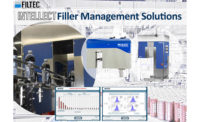
The dairy industry is on the cusp of a new era of packaging innovation, driven largely by sustainability and Environmental, Social, and Governance (ESG) targets that require investment in new packaging solutions to limit food waste, reduce greenhouse gas emissions, and reduce landfilling. Dairy companies and suppliers are finding new ways to meet these commitments that better the planet as well as delivering shareholder value. Yet, while innovation is accelerating to meet the demands of the market, packaging sustainability will also need to be a regulatory compliance concern.
Over the last three years, California, Colorado, Maine, and Oregon have enacted “Extended Producer Responsibility” (EPR) laws aimed at shifting financial responsibility for recycling, landfilled waste reduction, and other environmental and societal improvements to companies selling products in those states. New York legislators have also attempted to pass legislation, and the International Dairy Foods Association (IDFA) expects that effort to continue in the next legislative session.
As a result, any dairy company selling into these states should already be considering how to best integrate the state requirements into their business practices and sustainability plans.
There is no one way for policymakers to implement EPR, and each state’s unique approach will help determine the success of the program for all stakeholders. What the laws have in common is that each will demand minimum recycling rates and recyclability requirements for dairy product packaging. However, in California, statutory source reduction targets also will be applicable to plastic packaging.
EPR laws aim to shift financial responsibility for the recycling system at large to product manufacturers by charging fees to those brands that sell or distribute products into the state markets. States calculate these fees based on packaging tonnage sold or distributed in the state, and in California, the number of components in a package is also considered.
The states also incorporate a system of credits and “malus” fees that incentivize more recyclable and source-reduced packaging. To calculate the fees and determine compliance, states can and will require detailed data reporting and companies will need robust internal systems to measure their state packaging output by weight and component along with the rate of change over time. Establishing a benchmark now will help any company develop programs and obtain resources for both ensuring compliance and tracking of sustainability initiatives and ESG targets.
Companies also need to be closely engaged with their packaging suppliers, packaging engineers, and designers, with an eye toward the Association of Plastic Recyclers “APR Design Guide.” To meet EPR recyclability and source reduction targets, companies will need to look at how components are used in their packaging material, in addition to labels, shrink wraps, inks, solvents, and adhesives. At the same time, companies can look to identify source reduction opportunities that meet both EPR compliance requirements and sustainability goals.
With packaging manufacturers developing innovative approaches to meet these market and compliance demands, the next generation of materials and packaging designs will be expected to satisfy environmental and product performance requirements. These investments will pay off because the harder and more expensive it is to recycle packaging, the higher the EPR fee for said company. Increasing the recyclability of packaging and achieving source reduction will not only lower fees, but will go to great lengths to improve sustainability performance. A win-win for everyone.
Rapid innovation without sacrificing food safety or functionality is going to be necessary to achieve source reduction targets. Over the next several years, the dairy industry will need to explore collaborations with suppliers and retailers in order to develop innovative strategies and packaging formats that can be reused and refilled multiple times, and done so safely by the consumer, a processor, or third party. While refill and reuse may be more limited for dairy than in other non-food sectors, we owe it to ourselves to work with retailers and our supply chain to seek pragmatic innovative solutions and technologies.
Danielle Quist is the vice president for regulatory affairs and counsel at the International Dairy Foods Association. Quist leads IDFA’s work on environment, sustainability, packaging, worker safety, financial regulation, and environmental compliance, where she advocates industry positions and monitors regulatory issues impacting dairy processors. She has more than 20 years of legal experience.




